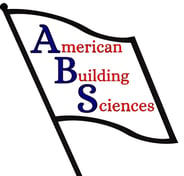Leak Source Identification
Leak Detection involves the use of observations and instrumentation to identify leaks. The first step in identifying a leak source is to observe the materials and components in the area of concern. Careful observation can reveal signs such as water meter movement, sounds, staining, discoloration, and deterioration that were not initially apparent. After careful observation, instrumentation should be used to further narrow down the leak's location.
Moisture meters can be used for mapping the moisture in the residence to help identify the area of the leak. Forward Looking Infrared (FLIR) thermal imagery helps identify temperature gradients typical of the presence of moisture, aiding in the identification of the leak source. Infrared thermometers can determine temperatures to identify condensing surfaces. A sling psychrometer is used to measure the dew point temperature and the Relative Humidity (RH) in the residence. With proper use of these and other instruments, a clearer picture of the leak area will begin to develop.
As many components do not contain water or are not under water pressure unless they are in use, testing may be necessary to confirm the leak source. This testing must be conducted appropriately to prevent failure of unrelated components. Correctly identifying the leak source depends on the knowledge and expertise of the professional evaluating the issue. This process will reliably identify the leak source, enabling repairs to be made correctly the first time. If you need help identifying a leak source, we would be honored to provide our assistance.




